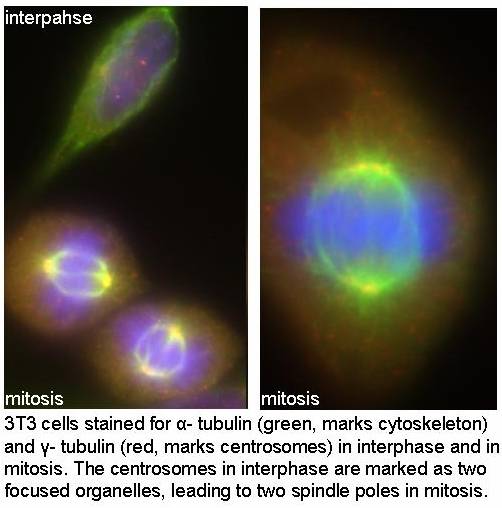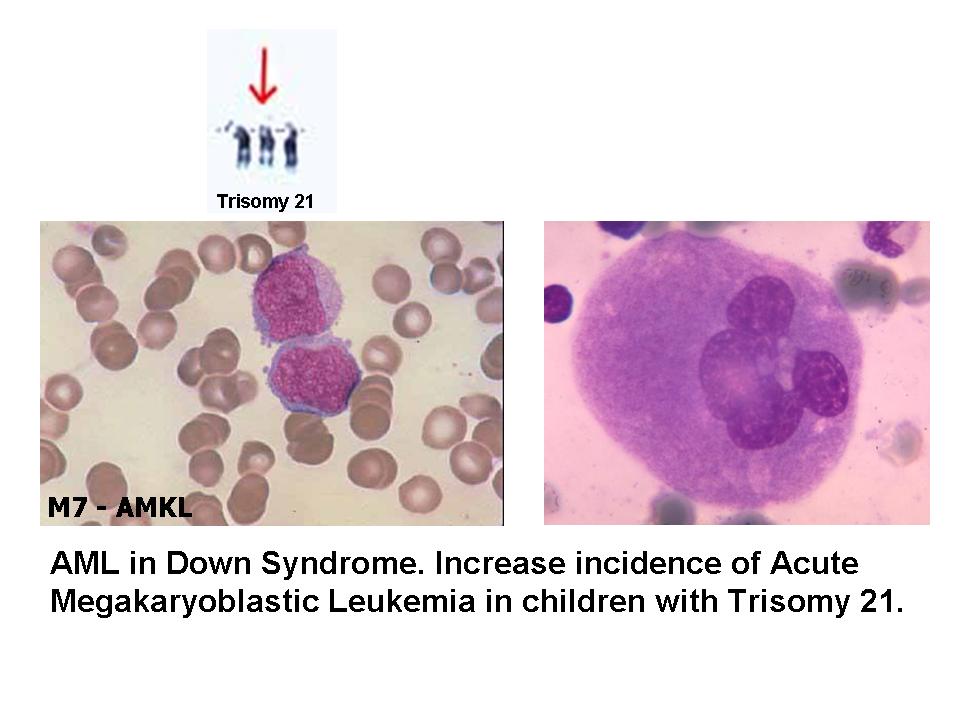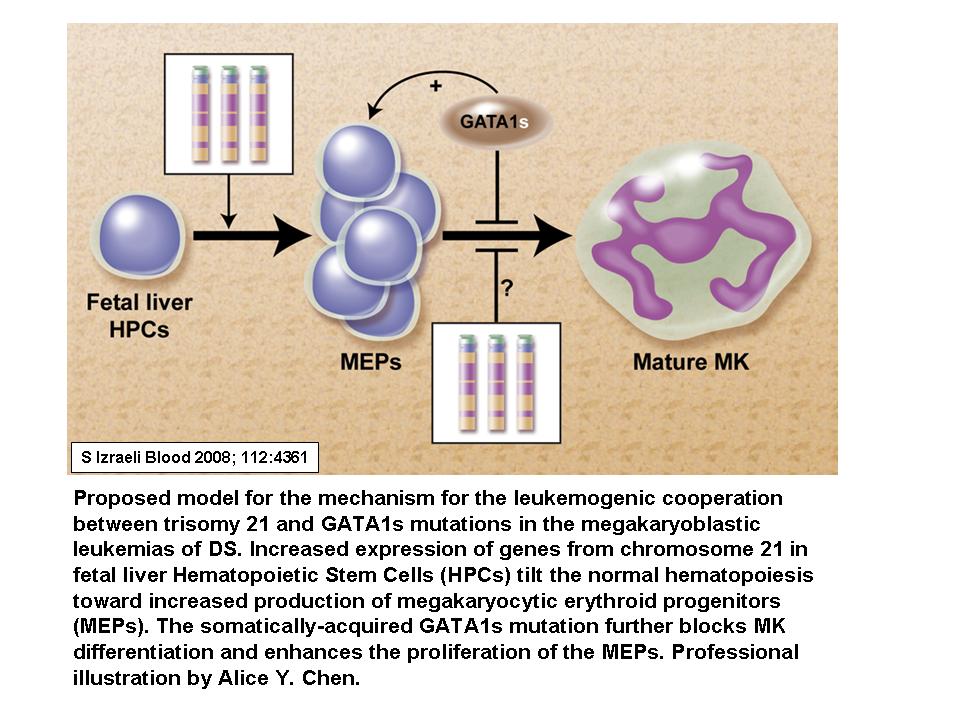Research Topics
Our Research is divided into two major aspects:
1) Deciphering the pathogenesis of childhood leukemia - This major focus of our laboratory is headed by Dr Yehudit Birger. Currently we focus on the following themes:
(a) The leukemias of Down Syndrome as a model for childhood leukemia.
Leukemias, like every cancer, are caused by changes in the DNA which include changes in the structure or number of the chromosomes. Extra copy of chromosome 21 is often found in leukemias. Children with Down syndrome have an extra chromosome 21 in their normal cells and have a marked increase in the risk of developing leukemia. We therefore study the leukemias of Down Syndrome with the ultimate goal of identify and characterize abnormalities associated with chromosome 21 leukemias in children. These studies have already lead to important discoveries (1, 2) such as the GATA1 mutations in the myeloid leukemias of Down Syndrome(3), the cooperation with the chromosome 21 transcription factor ERG in myeloid leukemias of Down Syndrome(4)(5) and the involvement of JAK2 in the lymphoid leukemias(6). Our discoveries are important not only for patients with Down Syndromes but for all patients with leukemia. For example the mutations in JAK2 we discovered are important for many children with incurable leukemia, and ERG has been shown to be an important leukemia and prostate cancer oncogene. This discovery may lead to specific therapies of these leukemias. Furthermore, elucidation of the role of trisomy 21 in leukemia may contribute to the general understanding of the role of chromosomal aneuploidy in cancer (7).
(b) The Genetic Basis of Brain Metastasis in Leukemia and Solid Tumors: Metastasis to the brain is one of the most devastating complications of cancer and of childhood leukemia. To prevent this complication most children get either irradiation or intra-spinal chemotherapy with long lasting effects on neuropsychological functions. We want to find the factors that determine specific spread of cancer cells to the brain in order to personalize treatment to high risk patients and to provide a base for novel more specific less toxic therapies. To approach this challenging problem we use genomic, cell culture and mouse models. Initial studies identified three genes predicting brain metastasis of lung cancer(8) and, in a collaborative study with the BFM group in Germany, that increased expression of interleukin 15 in primary leukemia cells is associated with increased spread to the central nervous system(9).
(c) MicroRNAs and non-coding RNAs in childhood leukemia. We are studying the role of these newly described genes in childhood leukemia. In a collaborative study with the University of Dusseldorf, we have recently discovered the involvement of a microRNA, miR125b, in providing survival advantage to the most common childhood leukemia containing the TEL/AML1 translocation (Gefen et al. leukemia, in press)
(d) Clinical studies of childhood acute lymphoblastic leukemia (ALL): Prof Shai Izraeli is the co-chair of the Israel National Study of childhood ALL.
2) The SIL (STIL) gene as a regulator of mitosis and survival of cancer:
 |
|---|
S The SIL (SCL TAL1 Interrupting Locus - STIL) gene was identified because of its involvement in childhood T-ALL. Our studies have revealed a far broader role for SIL. It encodes a cytosolic protein that is important for embryonic development and Hedgehog signaling(10). Physiologically it regulates the entrance to mitosis. It is overexpessed in many types of cancers and its silencing by RNA interference technologies results in cancer cell death in-vitro and in-vivo(11, 12). Our current research aims are to reveal how SIL regulates mitosis and survival and how could it be targeted for cancer therapy.











